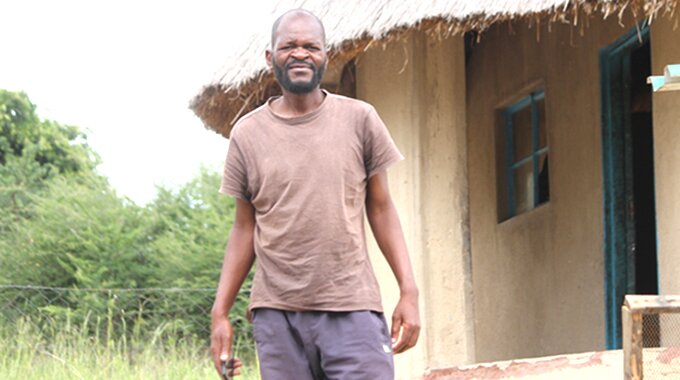For the foreseeable future, Zimbabwe is going to be relying on coal fuelling thermal power stations for the bulk of its electric energy, and certainly for the base load, and it needs to take this energy source seriously if we are to achieve our Vision 2030.
For all its environmental advantages and low operating costs, hydro has one major problem, that if the Zambezi River is running at low levels in a regional drought, then we cannot generate much power.
The droughts that have hit Lake Kariba will obviously cause a serious rethink of the proposed Batoka Gorge scheme and bring up the question whether the huge sums needed in capital costs could not be spent better on a coal station.
Solar has major attractions, but a solar station only generates when the sun is shining.
Admittedly, with Kariba South being an oversized power station and the lake having a huge storage capacity, it is possible to run a solar station and Kariba South in tandem, cutting right back at Kariba when the sun shines and using solar for that period, and then opening up Kariba South to high output at night.
But there are limits as to what Kariba South can save in water in day time, and that is the maximum storage.
So, we are back to good old-fashioned coal if we want reliable and adequate electricity supply.
Advertisement
Hydro and solar can cope with the peaks and fluctuations in demand, but we cannot generate enough reliable hydro power or use solar out of hours.
Zimbabwe has the second or third largest coal reserves in Africa, depending on the exact size of Botswana’s reserves when they are fully mapped, and so there is no excuse for us having to sit in the dark, close down a factory or tell a new investor that we are so sorry we cannot supply the necessary electricity.
Coal stations are an established mature technology, thus Zesa’s mismanagement of Hwange Thermal should not be accepted.
The station is running at around a third of its rated capacity due to equipment not working, because it was not maintained or not replaced as it wore out.
Admittedly, political pressure prevented Zesa from charging what it needed to maintain and run the station, but the actual costs needed to be checked very carefully, and as we move into tariffs that are viable, will continue to need checking and comparison with best international practice.
Zimbabwean consumers will have to accept that they need to pay the right price for electricity, but that does not mean they have to accept that they pay for Zesa’s inefficiency.
And this weekend brought up another point to ponder when it comes to efficiency.
The three units operating at Hwange Thermal were shut down because the coal became wet during a serious storm over Hwange.
This startles just about everyone. And the new Zesa board now has another box to tick as it sets new standards and checks compliance.
At the same time, the Zesa board needs to have a serious talk to the mining companies, making it clear that they too are expected to keep to regular contractual supplies. Flooded mines can be drained.
The second area that needs fixing is the coal supply.
Three companies are now mining in the Hwange area, which introduces some much-needed competition and opens options for Zesa.
But already disputes are surfacing over Zesa’s payment schedule for the coal and the quality of the coal being delivered.
In the real business world, both would be contractual obligations and, in any case, power station designers would be taking into account the quality of the coal in the coal field.
Advertisement
Thermal stations can be designed and operated for a wide variety of coal types and qualities and there are formulas that allow the best design fit for the available coal.
The present six units at Hwange Thermal were designed to use an average quality that was below the best available quality, to ensure that costs were kept down.
Original planning saw the upper half of the coal seam being scrapped and just the better quality lower half used in the station.
Engineers re-did their sums and using the whole seam, mixing all grades, came out as the most viable solution.
If original planning had been followed, Hwange Thermal would have been adequately maintained.
Boilers and the coal feed were identified early as the most vulnerable area that would need replacement more frequently than the cleaner environments of the turbines and the generators.
In the 1990s, the next two large units, the two that we started fitting last year, would have been added. So, with decent maintenance and the extension, we would now have a 1 500MW thermal output and very little load-shedding.
In fact, under the original planning, we would have been doing better. The second large thermal would be operating, the one that Rio Tinto is now keen to build once some serious discussion have been completed on how much Zesa will pay for the power from that station.
That station is designed as two 600MW stages, but if we had been serious both would now be in place, giving us 2 700MW of base load thermal, plus up to 1 050MW of peak power hydro from Kariba.
To put this into perspective, middle income countries around Zimbabwe’s size need 5 000MW to 10 000MW, so two large thermals and one large hydro would just be a decent start, with more coming on grid every couple of years during the 2020s. We thus need to catch up quickly and start expanding fast.
Zesa needs to accept that best practice is just good enough and start having pride in supplying Zimbabwe’s energy.
Backing its engineering talent would be a good start. Coal will be the centre of the expansion and so power needs to be correctly costed, using standard formulas not political guesses or desires of inefficient managers for luxury offices.
– HERALD








